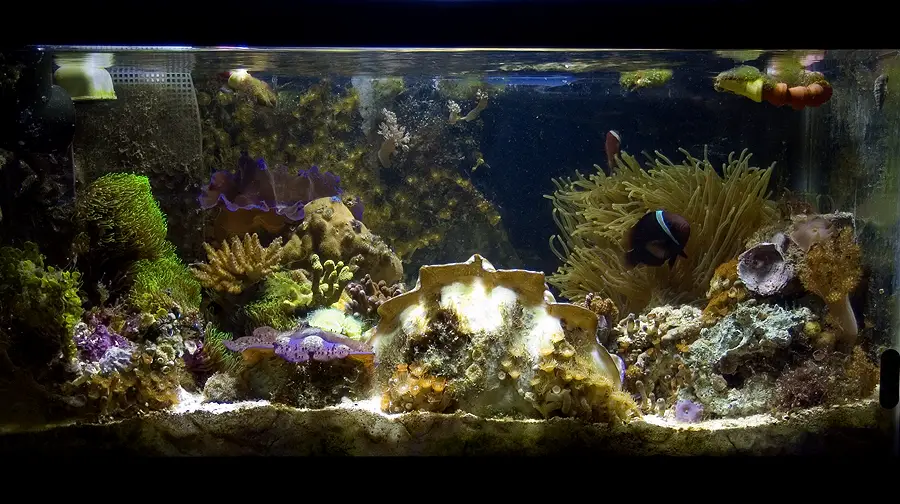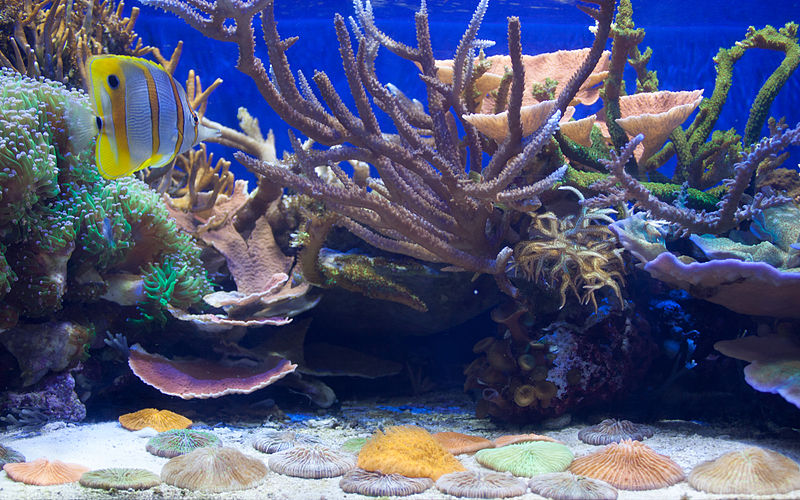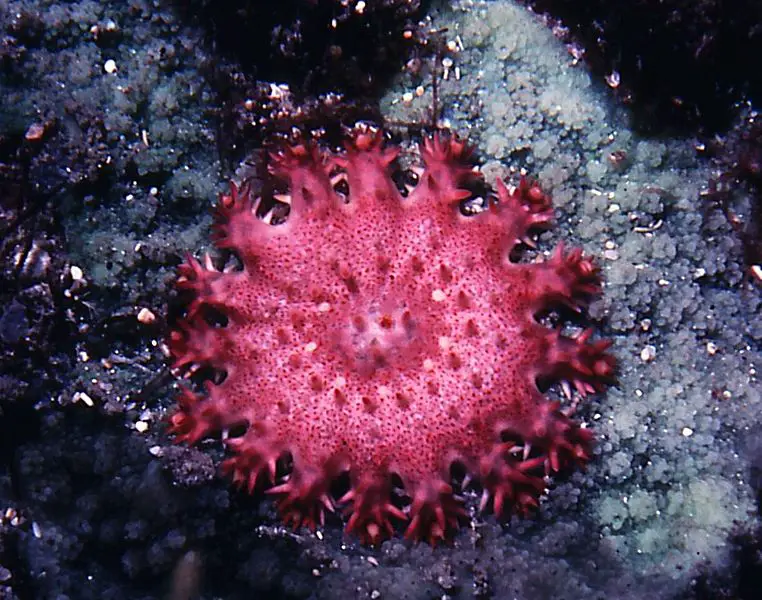Acquiring new corals for your reef tank is an exciting endeavor, but it’s crucial to prioritize their safe acclimation. Properly acclimating corals helps reduce stress and increases their chances of survival and successful integration into the existing ecosystem of your tank.
In this comprehensive guide, we will explore the step-by-step process of safely acclimating new corals to your reef tank, ensuring their smooth transition and long-term health.
Understanding the Needs of Corals

Before introducing new corals, it’s essential to have a comprehensive understanding of their specific needs. Different coral species have varying requirements in terms of lighting, water flow, water chemistry, and compatibility with other tank inhabitants. By researching and familiarizing yourself with the specific needs of your corals, you can create an environment that supports their optimal growth and health.
Start by identifying the coral species you plan to introduce to your reef tank. Each species may have unique lighting preferences, ranging from low to high light requirements. Understanding these preferences will help you position the corals appropriately within your tank and ensure they receive the right amount and quality of light for photosynthesis and growth.
Water flow is another crucial factor to consider. Some corals thrive in areas with higher water flow, while others prefer calmer regions. By creating varied flow patterns in your tank, you can cater to the needs of different coral species and promote optimal nutrient exchange and waste removal.
Water chemistry plays a vital role in coral health. Parameters such as temperature, pH, alkalinity, calcium, and magnesium levels must be monitored and maintained within the appropriate ranges.
In addition, different coral species may have specific preferences for these parameters, so it is crucial to adjust them accordingly to provide an ideal environment for your corals.
Compatibility with other tank inhabitants is also important. Some corals may release toxins or engage in aggressive behavior, which can harm or stress neighboring corals or other organisms. Understanding the compatibility of different coral species and their interactions with other tank inhabitants, such as fish or invertebrates, will help you create a balanced and harmonious ecosystem.
By gaining a thorough understanding of the specific needs of your corals, you can ensure their successful acclimation and long-term well-being in your reef tank. In the next section, we will discuss preparing your tank to receive new corals, focusing on water quality considerations and quarantine procedures.
Preparing Your Reef Tank for New Corals

Before introducing new corals to your reef tank, it is crucial to ensure the tank is appropriately prepared to provide an optimal environment for their acclimation and growth. This involves focusing on water quality considerations and implementing necessary quarantine procedures.
Maintaining high water quality is paramount for the health of both existing and incoming corals. Regular testing of water parameters such as temperature, salinity, pH, ammonia, nitrite, and nitrate levels is essential. If any parameters are out of range, adjustments should be made before introducing new corals. Stability in water parameters is crucial to minimize stress on the corals and support their acclimation process.
Additionally, it is advisable to quarantine new coral additions before introducing them to your main tank. Quarantine serves as a precautionary measure to prevent the introduction of potential pests or diseases to your reef ecosystem.
Set up a separate quarantine tank with similar water parameters to your main tank and observe the new corals for any signs of illness, parasites, or abnormal behavior during the quarantine period. This step allows you to address any issues and provide appropriate treatment, if necessary, without risking the health of your established tank.
During the quarantine period, it is also beneficial to closely monitor and adjust the lighting and water flow settings to match those in your main tank gradually. This helps the corals acclimate to the conditions they will eventually encounter when transferred to the main display.
By ensuring optimal water quality and implementing proper quarantine procedures, you create a healthier and more resilient environment for both existing and new corals. In the next section, we will explore the step-by-step acclimation procedures to safely introduce new corals to your reef tank.
Acclimation Procedures
Acclimating new corals to your reef tank is a critical process that should be carried out with care and patience. There are different methods for acclimation, but two commonly used techniques are the drip acclimation method and the float and release method. Let’s explore each process in detail:
Drip Acclimation Method:
1. Gather the necessary equipment, including a clean container, airline tubing, a drip acclimation kit, and a bucket.
2. Float the coral’s shipping bag or container in the tank water to allow the temperature to equalize gradually.
3. Carefully open the bag and transfer the coral along with its water into the clean container.
4. Start a siphon with the airline tubing, using a drip acclimation kit, to create a slow and steady drip into the container.
5. Adjust the flow rate to approximately 2-4 drips per second.
6. Allow the drip acclimation process to continue for about 1-2 hours, gradually adding tank water to the container.
7. After the acclimation period, carefully transfer the coral from the container to your main tank, ensuring not to introduce any water from the container.
Float and Release Method:
1. Float the coral’s shipping bag or container in the tank water to equalize the temperature.
2. Open the bag and gently release the coral into the tank water without adding any water from the bag.
3. Monitor the coral closely for signs of stress or adverse reactions, such as tissue recession or excessive polyp extension.
4. If the coral appears to be adjusting well, find an appropriate location within your tank and secure it in place.
Regardless of the method chosen, it is essential to maintain a smooth and gradual transition for the corals, allowing them to adjust to the temperature and water chemistry of the tank. Observing the corals closely during and after acclimation will help identify any signs of stress or potential issues that must be addressed.
In the next section, we will discuss the importance of monitoring and observing newly introduced corals in your reef tank, as well as signs of stress or disease to watch out for.
Monitoring and Observing New Corals
Once you have successfully acclimated and introduced new corals to your reef tank, it is crucial to closely monitor and observe them to ensure their health and well-being. By regularly assessing their behavior and appearance, you can identify any signs of stress, disease, or other issues early on, allowing for prompt action and appropriate care.
Initial placement and positioning of the corals within your tank are essential. Consider each coral species’ lighting and flow preferences and find suitable locations that provide the necessary conditions for their growth. Pay attention to the proximity of other corals or potential aggressors to prevent excessive competition or aggression.
Observe the corals regularly to assess their overall health. Look for signs of vibrant coloration, expanded polyps, and healthy tissue. Conversely, if a coral’s color appears dull, the polyps are retracted, or any tissue discoloration is present, it may indicate stress or potential health issues.
Monitor the feeding response of the corals. Most corals obtain nutrition through photosynthesis, but some may benefit from supplemental feedings. Observe their reaction to feeding, ensuring they are actively capturing and consuming food. Adjust the feeding regimen to provide the nutrition for optimal growth.
Keep an eye out for any signs of stress or disease. Common indicators include:
– Tissue recession.
– Skeletal exposure.
– Excessive mucus production.
– Abnormal growth patterns.
– The presence of pests such as flatworms or nudibranchs.
If you notice any of these signs, it is important to act promptly. Quarantine affected corals, if possible, and seek advice from experienced reef keepers or professionals to determine the appropriate treatment or intervention.
Regular water parameter monitoring and maintenance are also crucial for coral health. Continuously assess and maintain stable parameters such as temperature, salinity, pH, alkalinity, and nutrient levels to ensure an optimal environment.
By closely monitoring and observing your newly introduced corals, you can promptly detect and address any issues, promoting their overall well-being and success in your reef tank. In the next section, we will explore post-acclimation care, including lighting adjustments and regular maintenance tasks to support the long-term health of your corals.
Post-Acclimation Care
After successfully acclimating new corals to your reef tank, it is vital to provide them with proper post-acclimation care to support their long-term health and growth. This care includes adjustments to lighting, nutrition supplementation, and regular monitoring of water parameters.
One aspect of post-acclimation care is gradually adjusting the lighting for the new corals. When introducing corals to your tank, it is advisable to start with lower light intensity and gradually increase it over several weeks. This allows the corals to acclimate to the new lighting conditions and helps prevent stress or tissue damage due to sudden changes.
Observe the corals closely during this adjustment period and monitor their response to the lighting levels. Fine-tune the lighting intensity and duration based on the specific requirements of each coral species.
Proper nutrition is essential for the growth and well-being of corals. While many corals obtain most of their energy through photosynthesis, supplemental feeding can benefit certain species.
Consider providing specialized coral foods or target feeding with small, appropriate-sized food particles. Research the nutritional needs of your specific corals and offer a variety of suitable foods to ensure they receive the necessary nutrients for optimal growth.
Regular monitoring of water parameters is crucial for maintaining a stable and healthy environment for your corals. Test and maintain appropriate temperature, salinity, pH, alkalinity, and nutrient levels. Regular water changes and maintenance tasks, such as skimming, filter cleaning, and removing debris, help promote water quality and prevent the buildup of harmful substances.
Observe the corals closely for any changes in behavior, growth patterns, or signs of stress or disease. Regularly inspect the health and condition of the coral tissue, ensuring it remains vibrant and free from discoloration, tissue recession, or any other abnormalities. If any issues arise, seek advice from experienced reef keepers or professionals if necessary.
By providing proper post-acclimation care, including gradual lighting adjustments, adequate nutrition, and regular monitoring of water parameters, you can create a favorable environment for the long-term success and well-being of your corals. Here are some additional tips to consider:
1. Maintain stable water parameters: Regularly test and adjust the temperature, salinity, pH, alkalinity, and nutrient levels to ensure they remain within the appropriate ranges for your corals. Stability is key to minimizing stress and promoting optimal coral health.
2. Implement a regular maintenance routine: Perform regular water changes to maintain water quality and remove any accumulated waste or debris. Clean filtration equipment, such as protein skimmers and filters, to ensure they are functioning optimally.
3. Monitor and control algae growth: Algae can compete with corals for light and nutrients, hindering their growth. Implement strategies to control algae, such as maintaining proper nutrient levels, employing algae-eating organisms, and ensuring adequate water flow.
4. Pay attention to coral aggression and compatibility: Some corals may exhibit aggressive behavior towards neighboring corals, leading to tissue damage or stunted growth. Research the compatibility of different coral species and provide adequate spacing to prevent aggressive interactions.
5. Regularly observe and assess coral health: Continuously monitor the behavior, coloration, and growth of your corals. Look for any signs of stress, disease, or tissue damage. Promptly address any issues that arise, such as quarantining affected corals or seeking professional advice.
6. Adjust lighting and flow as needed: As your corals grow and mature, their lighting and flow requirements may change. Regularly assess and adjust the lighting intensity, spectrum, and duration to meet the specific needs of your corals. Similarly, adjust water flow patterns to ensure optimal nutrient exchange and waste removal.
Remember, maintaining a healthy reef tank is an ongoing process that requires regular attention and care. Stay informed about the latest advancements in reef keeping and seek advice from experienced hobbyists or professionals when needed.
In conclusion, safely acclimating new corals to your reef tank is crucial for their successful integration and long-term health. By understanding the specific needs of your corals, preparing your tank appropriately, and following the recommended acclimation procedures, you can create an optimal environment for their growth and well-being. Regular monitoring, proper post-acclimation care, and proactive troubleshooting will help ensure the continued success of your reef tank and the thriving of your corals. Happy reef keeping!
Here are some frequently asked questions (FAQs) about acclimating new corals to a reef tank:
How long should I acclimate my new corals?
The duration of the acclimation process can vary depending on the specific needs of the corals and the acclimation method used. Generally, a period of 1-2 hours is sufficient for most corals. However, it’s important to monitor the corals closely during this time and adjust the duration as needed to ensure a smooth transition.
Can I acclimate multiple corals at once?
Yes, you can acclimate multiple corals at once. However, it’s important to consider the compatibility of the corals and their specific needs. If you’re acclimating different species with varying lighting or flow requirements, it may be best to acclimate them separately to provide optimal conditions for each coral.
Should I dip my new corals before acclimation?
Dipping corals in a specialized coral dip solution can help remove potential pests or parasites that may be present on the coral. It is generally recommended to dip new corals before acclimation to reduce the risk of introducing unwanted organisms to your tank. Follow the instructions provided with the coral dip solution and rinse the coral thoroughly with tank water before acclimation.
How do I know if my corals are stressed or unhealthy after acclimation?
Signs of stress or potential health issues in corals can include tissue recession, color loss or dullness, excessive mucus production, abnormal growth patterns, or the presence of pests. Monitor the corals closely for any changes in behavior, appearance, or growth. If you notice any of these signs, take prompt action to address the issue, such as adjusting water parameters or seeking professional advice.
Can I add new corals directly to my main tank without quarantine?
While quarantine is generally recommended to minimize the risk of introducing pests or diseases to your tank, it is ultimately a personal decision. Quarantine provides an opportunity to observe and treat new corals, if necessary, before introducing them to the main tank. If you choose not to quarantine, closely monitor the new corals for any signs of illness or pests and be prepared to take action if needed.
How often should I adjust the lighting and flow for my corals?
The lighting and flow requirements of corals can change as they grow and mature. It’s important to regularly assess and adjust the lighting intensity, spectrum, and duration to meet the specific needs of your corals. Similarly, monitor and adjust water flow patterns to ensure optimal nutrient exchange and waste removal. Pay attention to the response of your corals and adjust as needed.



